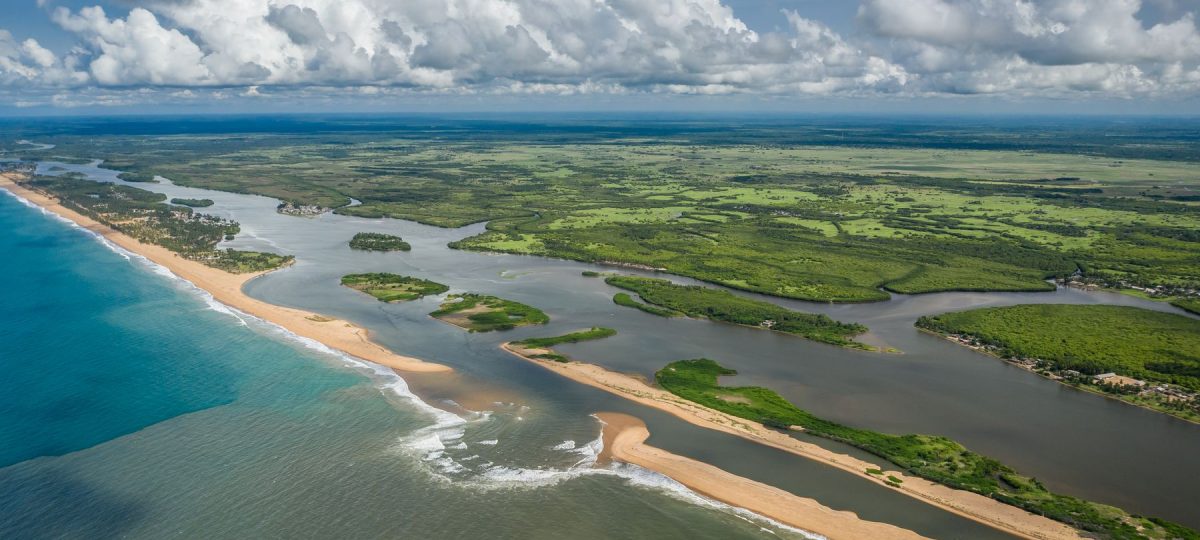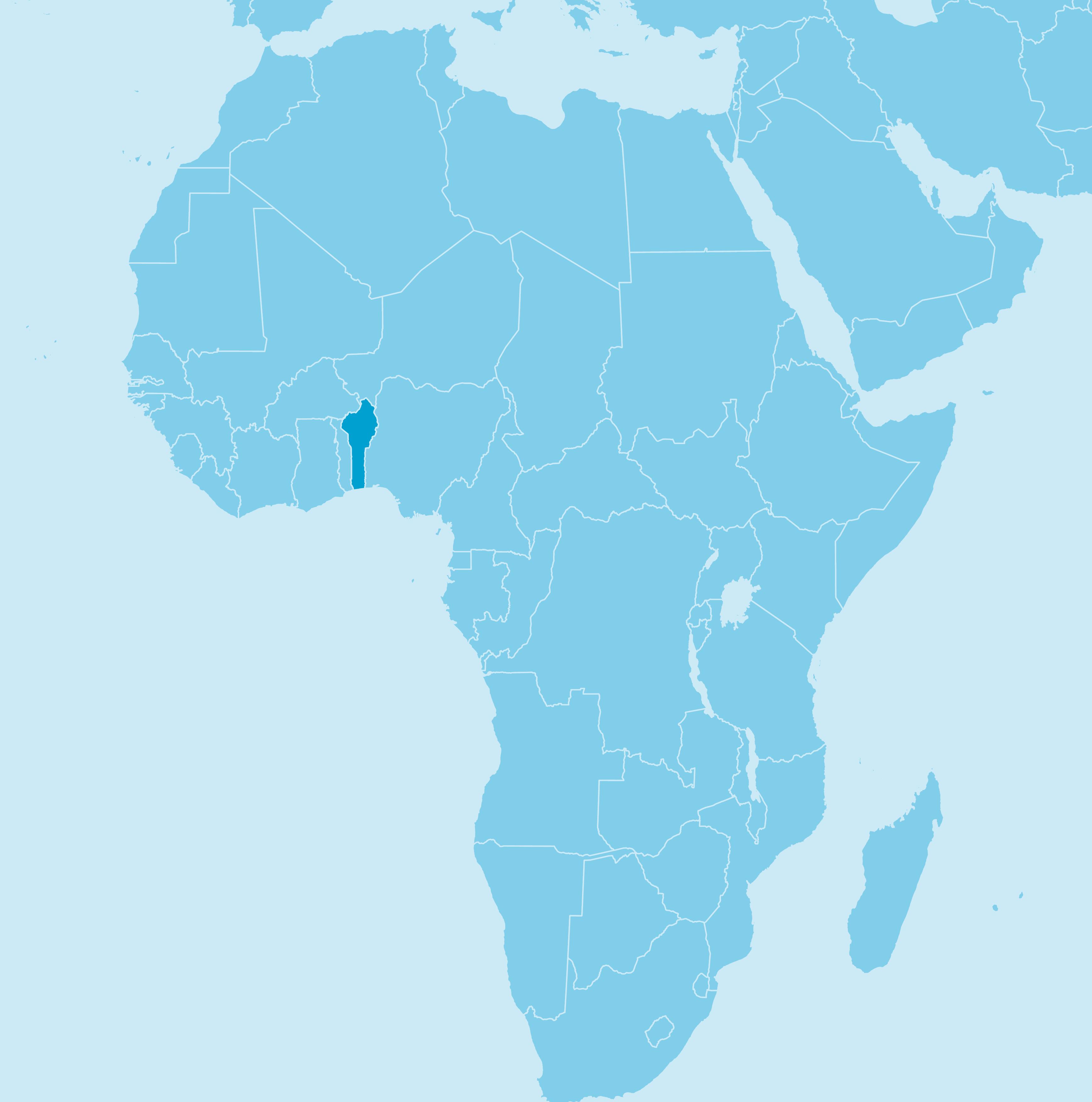The Bouche du Roy Reserve is located in the Mono Delta in Benin, West-Africa. According to the national forest strategy of Benin, there has been a 30% decrease in mangrove habitats in the Mono Delta since 1995, primarily caused by agricultural clearing, overexploitation of fisheries, uncontrolled logging, and urbanisation, along with natural factors like sand dune dynamics. IUCN NL and Eco-Benin are working together to promote human development and preserve natural resources in the Mono Biosphere Reserve. The project aims to create a high-integrity blue carbon initiative in collaboration with the communities of Grand-Popo and Comé.
Header photo: Bouche du Roy-reserverve in Benin. © Eco-Benin
What is blue carbon?
Blue carbon refers to carbon dioxide that is absorbed from the atmosphere and stored in coastal and marine ecosystems (hence the word ‘blue’). 83% of the global carbon cycle is estimated to circulate through the ocean, and although they cover less than 2% of the total ocean area, coastal ecosystems such as mangroves and tidal marshes can sequester great amounts of organic carbon[1]. In fact, they sequester and store more carbon per unit area than terrestrial forests[2]. They are therefore, if managed correctly, effective ocean-based solutions for climate change.
Mangroves also act as barriers, preventing soil erosion and protecting coastal communities from storms. They also provide vital areas for fish spawning, which are critical for maintaining fish populations. Degradation or damage of these ecosystems reduces their carbon sink capacity, releasing the stored carbon to the atmosphere. Conservation, restoration and sustainable management of these ecosystems is critical in the mitigation of climate change.
The Bouche du Roy Reserve shows great potential for blue carbon certification projects: a 2023 feasibility study projected the possible certification of 402,841 tonnes CO2-equivalents over a 30 years’ time span.
The approach of the project
The project aims to produce carbon credit revenues, in this way preserving and restoring mangrove forests and promoting sustainable development. The project, financed by the blue carbon revenues, will focus on three main activities.
- Monthly capacity building sessions with coastal communities, including established mangrove management standards in 17 villages.
- Development of a strategic plan to improve management of 1,500 hectares of mangroves. This includes the mapping of sacred forests, the delineation of boundaries for strictly protected zones, and the establishment of other core and buffer zones that harmonize conservation efforts with a focus on ecotourism, research, sustainable fishing practices and socio-economic activities.
- A mangrove restoration team will be trained to plant 7 million mangrove trees over 2,500 hectares, at a rate of 250 hectares per year for ten years. These activities are led by village assemblies and include sensitisation campaigns on sustainable mangrove management, training of identified groups and leaders, nursery establishment as well as planting campaigns during the dry season.
In this way, the project will create jobs for mangrove planting and maintenance, enhance eco-tourism, improve community livelihoods, promote sustainable artisanal fishery practices, and create alternative income-generating activities, especially for women. Access to credit loans will also be facilitated as part of the project’s holistic approach to environmental conservation and community well-being.


